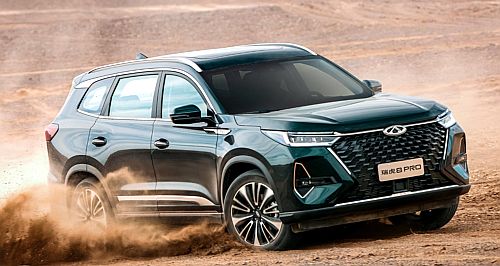News - CheryFactory importer draws line in sand for CheryChery’s second attempt at Aussie market to blend start-up agility, scale-up resources1 Sep 2023 CHINESE car-maker Chery’s second bite of the Australian market is going the whole hog with a factory-owned import operation that intends to have the agility of a start-up company but with the kind of resources and financial backing usually associated with a scale-up.
Although company execs are keen for the Chery brand to not be bunched with other Chinese car-makers in the hearts and minds of Australians, they do acknowledge that MG, GWM Haval and BYD are their biggest competitors here and are angling to replicate their success.
With 43 active dealers around Australia already – Chery only officially relaunched here in late March – a target of 50-60 retail sites nationwide would quickly provide the brand with an MG-like footprint.
To the end of July this year, MG sales in Australia have averaged almost 4600 units a month, or almost exactly double the total number of Omoda 5s Chery has delivered here in the first four months it has been on sale, although the Omoda 5 is not that far behind the similar size-and-price GWM Haval Jolion in terms of monthly average numbers
Chery Australia deputy marketing director, Andrew Haurissa, told GoAuto a key milestone for the business would be achieving enough brand awareness for it to “see a happy medium for marketing costs per car”.
“We are not a new business by any means; we have been selling cars (in China) since 1997, so I think the justification will come at that point,” he said.
“Building brand awareness in the Western world – especially Australia – things are a little bit more expensive than a lot of the other markets we're in but we understand that yes, it's an upfront investment.
“Without sales volume, it's very hard for us to justify the investment; same thing with the dealers, the dealers need to be convinced that we can sell.”
Asked how long Chery anticipated it would take to start achieving a return on the investment required to establish a factory import operation in Australia, Mr Haurissa said it would depend on how the market evolved and suggested decisions about ongoing investments would be made as Chery tracked trends and conditions.
“That's why we are looking at the market constantly, every month, not just by our performance, but our competitors' performance, whether it's indirectly or directly,” he explained.
“Assessing those metrics will give us a gauge of where to put our money.
“The markets change and with EV (electric vehicle) uptake as well, is that changing the scene or not? We have to adjust according to the way the market is.”
Mr Haurissa suggested Chery’s large global product portfolio and pipeline of new models would help it react to the Australian market with relative agility.
“We're a start-up, but we're not just a start-up; we’re also a scale-up,” he quipped.
“We have been (China’s) top passenger car exporter in the last 20 years; it's not it's not new for us to sell cars but it's more about how do we gain trust with the local audience and in the right way?
“I think the most important part is how we differentiate ourselves more among our competitors, especially Chinese competitors, and what our value proposition is.”
GoAuto understands that in addition to a range of Chery-branded models in the car-maker’s global portfolio, the Australian operation could have access to vehicles from some of its upmarket Exeed, mid-market Jaecoo and youth-oriented iCar sub-brands.
This could pan out in a similar way to GWM, which has its Haval passenger SUV range, Ora electric-only range and Tank off-road range as well as the GWM-branded Cannon ute. MG parent company SAIC is also considering which of its upmarket IM Motors models to bring to Australia, wearing MG badges.
Mr Haurissa told GoAuto that Chery was still building a profile of its Australian customer base in terms of model and variant preferences and that the picture would become clearer once the brand has been in the market for a year.
“It's going to be interesting to see what and where the EV products are that we can bring into this market,” he said.
Chery will soon follow up the Omoda 5 small SUV it relaunched on the Australian market within March with the Tiggo 7 Pro medium SUV. A seven-seat Tiggo 8 large SUV will also join the range, while battery electric and plug-in hybrid drivetrains are also confirmed – but under which models is yet to be determined.
A battery-electric version of the Omoda 5 is likely to be the first electrified Chery for this market, which Mr Haurissa predicted would arrive Down Under in the second quarter of next year if selected for import. However, the plug-in hybrid remains a subject of internal debate.
“With the launch of Omoda 5, we learnt a lot and I think we want to make sure that whatever car we're producing right now, when putting it into a roadmap, will be ready for Australia,” he admitted.
Mr Haurissa also revealed that many local Chery customers had traded up from cars that were reaching the end of their five- or seven-year warranty periods and agreed that the level of technology in cars like the Omoda 5 would represent a large leap for many of them.  Read more31st of August 2023  Chery sales to gather pace with Tiggo 7 ProTiggo 7 Pro expected to propel Chery reboot in Aus following Omoda 5’s strong start18th of August 2023  Chery Tiggo 7 Pro here later this yearChinese brand to launch second SUV model behind already available Omoda 5 |
Click to shareChery articlesMotor industry news |
















Facebook Twitter Instagram